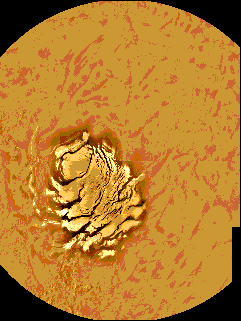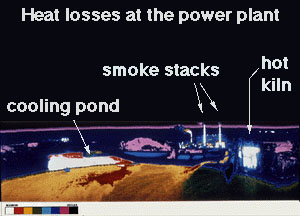Exploratour - The Surface of Mars
Click on image for full size
NASA
Polar Caps
This is an image showing ice on the Martian south pole. This continent sized island of ice is called a polar cap. The north pole also has an ice cap. These ice caps resemble the north pole of the Earth. There is no identifiable continent underneath the ice.
Besides ice, the southern polar region of Mars contains other interesting geologic features such as layered terrain and giant sand dunes. At high resolution, this image shows river systems and layered terrain. The south pole should have been explored by the Mars Polar Lander, but it crashed into the surface and was destroyed.
The winter poles are the coldest regions of Mars. They can be tipped away from the sun by as much as 25 degrees. They can be in the dark for as long as 11 terrestrial months. But the polar caps of Mars grow and shrink with the season, and sometimes completely disappear. This is because, unlike the ice of Earth, the polar ice of Mars is a mixture of water and carbon dioxide (dry ice).
Carbon dioxide evaporates as the temperature warms with approaching spring. Both polar caps seem to be made of water, and that water is a permanent part of the polar landscape, while the southern polar cap also seems to have a significant permanent carbon dioxide component. When spring comes, the carbon dioxide evaporates and the polar cap shrinks in size. As winter approaches, a "hood" of carbon dioxide ice is formed over the top of the permanent sections of polar ice at each pole.
The presence of the polar caps, and their changes with the seasons, provides evidence of water on Mars.












